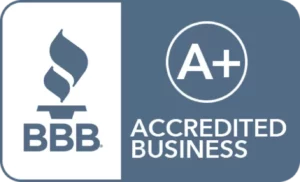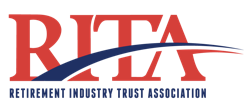SEP IRA
A Self-Directed IRA is a type of IRA structure that allows the IRA holder (you) to control over your retirement funds. But did you know that not all Self-Directed IRAs are the same? Most individuals know the IRS allows you to use your IRA to make traditional investments, such as stocks and mutual funds. However, the IRS also permits the use of IRA funds to make investments such as real estate, precious metals, tax liens and much more. All this tax-free and penalty free!
The SEP IRA in a Nutshell
An SEP IRA is a Simplified Employee Pension plan. It provides business owners with a simplified method to contribute toward their employees’ retirement. It also allows them to grow their own retirement savings. SEP is essentially an employer-sponsored profit-sharing plan. Contributions are made to a retirement account or annuity set up for each plan participant.
A SEP account is a traditional IRA. Therefore, it follows the same investment, distribution, and rollover rules as traditional IRAs. Employees must be included in the SEP plan if they:
- At least 21 years old
- Receive at least $550 in compensation annually from your business
- Work for your business for at least three of the past five years
The three-of-five eligibility rules means you must include any employee in your plan who has worked for you in any three of the past five years. However, the employee must satisfy the other plan eligibility requirements. This is the most restrictive eligibility requirement allowable. You can also use less restrictive participation rules in your plan. You can allow employees to participate immediately after they start work or after a shorter period of employment. If you use the three-of-five rule, you must count any work, no matter how little, in each of the prior five years. Use plan years (often the calendar year), not years based on the date the employee began working for you.
SEP IRA Contributions
The contributions you make to each employee’s SEP each year cannot exceed the lesser of
- 25 percent of compensation
- $66,000 for 2023
There are no catch-up contributions for a SEP IRA as with a 401(k) plan. These limits apply to contributions you make for your employees to all contribution plans, which includes SEPs. Up to $330,000 in 2023 of an employee’s compensation may be considered. Also, you must make contributions in cash, and you cannot contribute property.
Types of Self-Directed SEP IRA Accounts
There are essentially three types of Self-Directed SEP IRAs:
1. Financial Institution Offered Self-Directed SEP IRA
A very popular way to establish a Self-Directed SEP IRA account is through a financial institution. This is because major institutions, such as Bank of America, offer this account. However, when you go through a financial institution, you, the SEP IRA holder typically can’t make investments other than the ones the institution provides. These will include stocks, mutual funds, and bonds. They may be called “Self-Directed IRAs”, but they are very limiting. Oftentimes, IRA investors have to make traditional investments only.
Why do the financial institutions limit the investment options available?
Financial institutions that offer individuals retirement accounts have no obligation to allow investment diversification. While the IRS may approve real estate as an investment option, the institution may not allow you to invest in real estate. Instead, they restrict you to the financial products they offer. Why? It all comes down to dollars and cents. Financial Institutions, such as Wells Fargo and Bank of America don’t make money by allowing their clients to pull money out of their accounts to buy from a third-party.
2. Custodian Controlled Self-Directed SEP IRA
IRA Financial Trust Company offers Self-Directed SEP IRA investors full IRA custodial services. This is for both traditional and alternative asset investments. All IRA funds will be held with Capital One Bank, providing FDIC protection up to $250,000, before the client directs the funds for investment.
3. “Checkbook Control” Self-Directed SEP IRA LLC
With a “Checkbook Control” Self-Directed SEP IRA, you have full control over your funds. This means, you don’t need consent from a custodian to approve your investments. Whereas, in a custodian controlled Self-Directed SEP IRA, you do need custodian consent. As a result, when you see an opportunity you want to seize, all you have to do is write a check or wire funds from your SEP IRA LLC bank account.
Here is how the structure works:
- The Checkbook Control SEP IRA is set up as a Self-Directed account with IRA Financial Trust
- The funds are deposited with Capital One Bank
- A Limited Liability Company (LLC) is created and your new SEP IRA purchases all the membership units/interests
- Your money is held in an LLC and you are ready to invest at your discretion
IRA Financial Trust is proud to offer Checkbook IRA custodial services along with its full service IRA administration services. This is all for one low price with no transaction or asset valuation fees. IRA Trust Company is one of the few full-service IRA custodians who specialize in establishing Checkbook Control IRA LLC accounts.
IRA Financial Trust Company is a regulated, non-banking financial institution with specialists who commit themselves to helping you make Self-Directed retirement investments quickly. Additionally, our work is to minimize your annual fees. If you want to start your Self-Directed SEP IRA LLC, contact us today at 1-800-472-1043.











